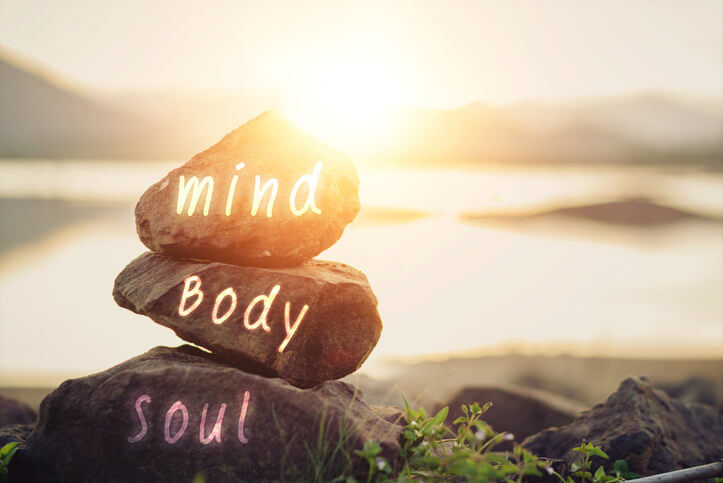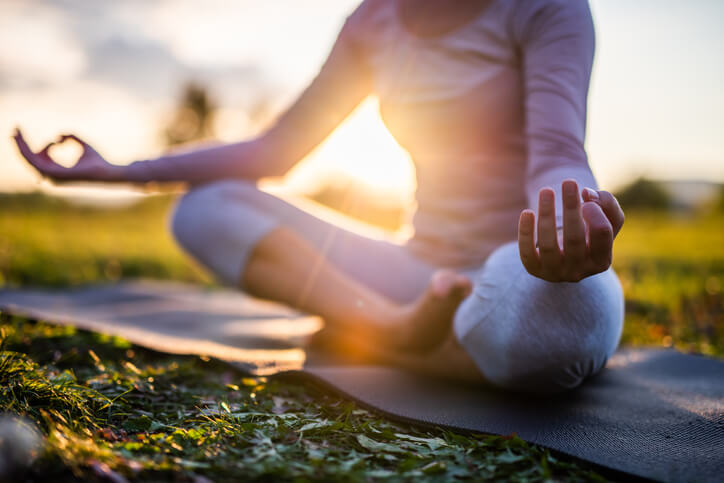 We all know of the benefits of movement and staying active on our physical health, but movement is also an incredibly powerful tool to boost our mood. Movement helps the body release endorphins, which are chemicals that our nervous system produces to reduce pain and relieve stress. They are often called the "feel good" hormones. Have you ever heard someone say they experienced a "runner's high?" Or maybe you have experienced this yourself. This feeling is the result of endorphins that are released by your body and make you feel good. If you have experienced this, you may have also felt sluggishness and a lack of motivation to actually lace up your shoes before you got out for your run. Many people who are regular runners push past this feeling because they know that after their run, they will feel on top of the world. For those of you who are experiencing sadness or a lack of motivation, it may be hard to start moving, but even the most gentle of movements can help you to release your own endorphins and begin to feel better.
We all know of the benefits of movement and staying active on our physical health, but movement is also an incredibly powerful tool to boost our mood. Movement helps the body release endorphins, which are chemicals that our nervous system produces to reduce pain and relieve stress. They are often called the "feel good" hormones. Have you ever heard someone say they experienced a "runner's high?" Or maybe you have experienced this yourself. This feeling is the result of endorphins that are released by your body and make you feel good. If you have experienced this, you may have also felt sluggishness and a lack of motivation to actually lace up your shoes before you got out for your run. Many people who are regular runners push past this feeling because they know that after their run, they will feel on top of the world. For those of you who are experiencing sadness or a lack of motivation, it may be hard to start moving, but even the most gentle of movements can help you to release your own endorphins and begin to feel better.
The mind-body connection refers to how our thoughts and feelings impact the way our body feels and vice versa. Our minds and bodies aren't completely separate from each other, in fact, they are very closely intertwined. For example, if you have ever felt anxious and noticed butterflies in your stomach, you have experienced the mind-body connection. When people have high levels of emotional distress over many years, they can actually develop physical illnesses and diseases such as heart disease or diabetes. We know that the way we feel emotionally can change the way we feel physically, which means that we can use movement to influence how we feel. Movement can help us relieve stress and keep us both mentally and physically healthy in the short-term and the long-term. If you have ever taken a yoga class and felt more calm and stress-free once you were done, you have experienced the powerful way that movement can improve our mental state.
When people think of being active, they often think of high intensity activities, but movement can take many different forms. The best part about using movement for your mental health is that you don't need to be super fit to get started! While movement can include running, biking, swimming or weight training, it can also be gentle and calming and include activities such as yoga, stretching, or tai chi. If you are feeling sad and unmotivated, you don't need to force yourself out to the gym for a grueling workout in order to start feeling better. Your mood can be improved by getting outside and taking a walk around your block. If you don't feel like getting outside, put on your favorite song and dance around your room or check out YouTube for hundreds of free yoga classes. You also don't need to be moving for all that long to start feeling the benefits. Some research shows that as little as 10-15 minutes of movement a few times a week can help make a difference.
 Besides just helping to boost our mood and relieve stress, being active has so many more benefits to our health and wellbeing. Moving our bodies has the ability to regulate our sleep, improve our memory, and boost our self-esteem. When we take an exercise class or run with a group, we have the added benefit of being around other people. Social connection is incredible for helping us with feelings of inclusion, motivation, and can get us out of our own head, even if only temporarily. You get bonus points if your activity gets you outside and into the elements. Spending time outside helps to relieve stress and make us feel more calm. So if your activity includes a run through the woods or yoga in the park, you get double the feel good endorphins!
Besides just helping to boost our mood and relieve stress, being active has so many more benefits to our health and wellbeing. Moving our bodies has the ability to regulate our sleep, improve our memory, and boost our self-esteem. When we take an exercise class or run with a group, we have the added benefit of being around other people. Social connection is incredible for helping us with feelings of inclusion, motivation, and can get us out of our own head, even if only temporarily. You get bonus points if your activity gets you outside and into the elements. Spending time outside helps to relieve stress and make us feel more calm. So if your activity includes a run through the woods or yoga in the park, you get double the feel good endorphins!
If you are having trouble getting started, it may be helpful to figure out a time of day you can consistently commit to moving your body. While taking a walk or exercising when you are feeling down or sad can help you in the moment, creating a routine or making time for movement in your daily life can help improve your mood in the long-term. For some people this is first thing in the morning or right before bed. If the evenings are the best time for you, I recommend building in gentle movement as opposed to high intensity exercise, as this can have a negative impact on sleep. Gentle activities before bed can include yoga, stretching, or taking your dog out. When movement becomes a regular activity, we may also notice improvements in our strength, endurance or form, which provides us with a sense of accomplishment.
Movement is a great tool for helping to improve our mental and physical well-being, and you don't need much to get started. Maybe before you go to bed tonight, you can do some gentle stretching, or maybe before you start work or school in the morning, you can commit to going for a walk around your block. If you are used to higher intensity exercise, maybe you can work towards engaging in that activity for a certain number of days a week or join a group of people who also do that activity. Not only will you feel that rush of endorphins as you are moving, but over time, you may notice you feel better able to regulate your mood through motion.